In the ruins of a prehistoric village near Jericho, scientists have found remains of figs that are believed to be the earliest known cultivated fruit crop, dating back 11,400 years ago. This discovery provides evidence of the first domesticated food production at the dawn of agriculture. The figs came from cultivated trees that were grown about 1,000 years before other staple crops like wheat and barley were domesticated in the Middle East. The cultivation of these ancient figs could be considered the beginnings of agriculture.
Key Takeaways:
- The ancient figs discovered near Jericho are the oldest cultivated fruit trees known, dating back 11,400 years.
- These figs were grown about 1,000 years before other staple crops like wheat and barley were domesticated.
- The cultivation of ancient fig trees marks the beginnings of agriculture.
- The discovery of ancient fruit tree cultivation provides insights into early human food production.
- The preservation and conservation of ancient fruit tree diversity are crucial for future generations.
Uncovering the Origins of Fruit Tree Domestication
The origins of fruit tree domestication can be traced back to ancient times when early humans began cultivating and propagating specific varieties of wild fruit trees. The discovery of ancient figs in the Jordan River Valley and the remnants of charred olive wood in the Jordan Valley provides valuable insights into the origins of fruit tree domestication and early fruit tree horticulture.
One of the key findings is the cultivation of ancient figs from a variant strain of the wild fruit tree. These figs had sweet fruit but no fertile seeds, indicating that early humans intentionally planted shoots or cuttings of the variant strain repeatedly to propagate the fig trees. This deliberate act of cultivating a specific variant of the wild fruit tree demonstrates early fruit tree domestication and the human ability to selectively breed desirable traits.
Additionally, the intentional planting of olive trees in the Jordan Valley further supports the evidence of fruit tree horticulture during ancient times. Early humans actively modified and changed their environment by planting and nurturing olive trees, which provided a valuable source of food and oil. This intentional cultivation signifies the development of early fruit tree horticulture practices and showcases the resourcefulness and adaptability of ancient civilizations.
Ancient Fig Cultivation
Based on archaeological findings, the ancient figs discovered in the Jordan River Valley were grown from a variant strain of the wild fruit tree. These figs had a unique characteristic of bearing sweet fruit without any fertile seeds. This discovery suggests that early humans recognized and propagated this variant strain by planting its shoots repeatedly, leading to the cultivation of fig trees with desirable fruit traits.
“The intentional cultivation of this variant strain of figs demonstrates early fruit tree domestication and the human ability to shape and manipulate the natural environment to meet their food needs.” – [Your Name]
The Rise of Olive Tree Cultivation
In addition to fig cultivation, the intentional planting of olive trees in the Jordan Valley provides further evidence of early fruit tree horticulture. Ancient civilizations actively changed their environment by nurturing and cultivating olive trees, which not only provided a source of food but also yielded valuable oil. This early practice of cultivating olive trees showcases the ingenuity and innovation of ancient societies in harnessing the benefits of fruit trees for sustenance and economic prosperity.
The Significance of Ancient Fruit Tree Domestication
The uncovering of the origins of fruit tree domestication has immense significance in understanding the early development of agriculture and human civilization. The intentional cultivation of specific fruit tree varieties highlights humans’ ability to shape and manipulate their environment, laying the foundation for the development of agricultural practices and the transition from hunting and gathering to settled communities.
“The origins of fruit tree domestication mark a crucial turning point in human history, representing the beginnings of agriculture and the human capacity to alter their surroundings for their own benefit.” – [Your Name]
Ancient fruit tree cultivation set the stage for the establishment of more complex societies, the division of labor, and the emergence of trade networks. The cultivation and propagation of these fruit trees not only provided sustenance but also gave rise to cultural traditions, culinary practices, and economic systems that have shaped human societies for millennia.
Dating the Oldest Cultivated Fruit Trees
When it comes to the oldest cultivated fruit trees in history, the figs discovered near Jericho take the crown. These figs have been dated to approximately 11,400 years ago, making them the oldest cultivated fruit trees known to date. To put this into perspective, these figs were grown about 1,000 years before staple crops such as wheat and barley were widely domesticated in the Middle East.
But figs aren’t the only ancient fruit trees that have left their mark. The intentional planting of olive trees in the Jordan Valley has been dated to around 7,000 years ago, marking the earliest evidence of fruit tree domestication anywhere in the world.
Take a look at the timeline below to get a better understanding of the dating of these ancient fruit trees:
The Significance of Early Fruit Tree Horticulture
The discovery of ancient fruit tree cultivation has had a profound impact on human cultural evolution. It represents a pivotal moment in history when early humans transitioned from relying on the natural environment to actively shaping it to meet their needs. The intentional planting of specific variants of fruit trees, such as figs and olives, marks the beginnings of agriculture and showcases the remarkable ability of humans to manipulate nature for food production.
This shift in mindset and practice set the stage for the development of more elaborate social contracts, institutions, and long-distance trade. By cultivating these ancient fruit trees, early humans not only secured a sustainable food source but also created the foundation for the complex societies we see today.
The Beginnings of Agriculture
The intentional cultivation of fruit trees like figs and olives marked a significant turning point in human history. It signaled a shift away from a nomadic lifestyle that depended on foraging and hunting to settle in one place and cultivate their own food. This shift allowed early humans to establish permanent settlements and develop an agricultural system that provided a stable and predictable food supply.
“The intentional planting of specific variants of fruit trees, like figs and olives, marks the beginnings of agriculture and showcases the remarkable ability of humans to manipulate nature for food production.”
The Manipulation of Nature
Through the cultivation of ancient fruit trees, early humans demonstrated their ability to shape and manipulate the natural environment to suit their needs. They selectively planted and propagated specific variants of fruit trees, utilizing their desirable characteristics such as taste and yield. This practice of intentional cultivation laid the groundwork for the domestication of other plant species, leading to the development of diverse agricultural systems.
Implications for Human Development
The significance of early fruit tree horticulture goes beyond mere sustenance. It represents a shift in human cognition and behavior, showcasing our capacity to understand and modify the natural world. By actively changing the environment, early humans were able to secure a stable food supply, leading to population growth and the development of more complex societies. This had broad implications for the evolution of human culture, technology, and social structures that continue to shape our world today.
By examining the impact of ancient fruit tree cultivation, we gain valuable insights into the foundations of agriculture and the remarkable abilities of early humans. It is through their pioneering efforts that we have inherited the rich diversity of fruit trees we enjoy today, with each variety representing a living testament to our shared history.
The Cultural Evolution of Early Agriculture
The development of agriculture, including the cultivation of fruit trees, played a pivotal role in human cultural evolution. The transition from relying on hunting and gathering to actively cultivating crops and domesticating animals allowed for a more stable and predictable food supply. This shift led to the development of settled communities, the division of labor, and the formation of complex social and economic systems. The cultivation of fruit trees, such as figs and olives, provided additional food sources and trade commodities, contributing to the wealth and prosperity of early human societies.
The Impact of Fruit Tree Cultivation
Agriculture, particularly the cultivation of fruit trees, had a profound impact on early human society. The ability to grow and harvest fruit trees like figs and olives provided a sustainable food source, reducing the need for constant hunting and gathering. This allowed communities to settle in one place and develop more complex social structures. With a stable food supply, specialization of labor became possible, leading to the emergence of various professions and trades. Additionally, the surplus food generated through fruit tree cultivation enabled early societies to engage in long-distance trade, fostering cultural exchange and economic growth.
| Impact of Early Agriculture on Human Society | Cultural Evolution |
|---|---|
| Stable and predictable food supply | Development of settled communities |
| Specialization of labor | Formation of complex social structures |
| Surplus food for trade | Economic growth and wealth accumulation |
The cultural evolution resulting from early agriculture and fruit tree cultivation laid the foundation for human civilization as we know it today. It marked a fundamental shift in how humans interacted with their environment, enabling the establishment of permanent settlements, the rise of social hierarchies, and the development of art, technology, and written language. The impact of ancient fruit tree cultivation continues to resonate in our modern world, both in terms of the genetic legacy of these trees and the cultural traditions they have influenced.
The Geographic Spread of Ancient Fruit Tree Cultivation
The origins of ancient fruit tree cultivation can be traced back to the Middle East, particularly in regions like the Jordan River Valley and what is now Israel. The cultivation of figs, olives, and other fruit trees spread throughout the Mediterranean region, as well as to other parts of the world through trade and colonization.
The Mediterranean Region
In the Mediterranean region, ancient fruit tree cultivation flourished due to the favorable climate and suitable growing conditions. The warm, sunny summers and mild winters provided an ideal environment for fruit trees to thrive. This region became a hub for the cultivation of figs, olives, grapes, and citrus fruits, which were highly valued for their nutritional and economic benefits.
Trade Routes and Colonization
As civilizations expanded and established trade routes, the cultivation of ancient fruit trees traveled to new territories. Phoenician traders played a significant role in spreading fruit tree cultivation throughout the Mediterranean and beyond. They introduced and traded various fruit tree species, contributing to the geographic spread of ancient fruit tree cultivation in regions such as North Africa, Europe, and Asia.
“The cultivation of ancient fruit trees spread through trade routes and colonization, reaching far and wide across different continents.”
Ancient Fruit Tree Adaptation
Ancient fruit trees have demonstrated remarkable adaptability to different climates and environments. As they spread geographically, these trees adapted to local conditions, resulting in the development of diverse ancient fruit tree species. For example, the cultivation of fig trees in the Mediterranean region gave rise to different varieties, each adapted to the specific microclimates of their respective regions.
Ancient Fruit Tree Species Distribution
The geographic spread of ancient fruit tree cultivation has led to a diverse array of species found across various regions of the globe. The following table showcases some of the ancient fruit tree species and their distribution:
| Ancient Fruit Tree Species | Geographic Distribution |
|---|---|
| Figs | Middle East, Mediterranean, North Africa, South Asia |
| Olives | Mediterranean, Middle East, North Africa, California |
| Grapes | Mediterranean, Europe, North America, South America |
| Pomegranates | Middle East, Mediterranean, Central Asia, North India |
The distribution of ancient fruit tree species showcases the global impact of ancient cultures and their agricultural practices. These trees have become integral parts of various cuisines and cultural traditions, enriching the diversity of plant life and human experiences around the world.
By understanding the geographic spread of ancient fruit tree cultivation, we can appreciate the rich legacy of these trees and the interconnectedness of different civilizations throughout history.
The Importance of Ancient Fruit Trees in Modern Agriculture
Ancient fruit trees have a significant role to play in modern agriculture, thanks to their long history of cultivation and diverse genetic traits. These trees provide valuable genetic resources for crop improvement and breeding programs, particularly heritage fruit tree varieties such as ancient figs, olives, and other fruits.
One of the key benefits of ancient fruit trees is their unique flavors, textures, and nutritional profiles, which are highly sought after by consumers. These ancient varieties offer a distinct taste experience that cannot be replicated by modern hybrids or commercial fruit varieties.
The preservation and conservation of ancient fruit tree diversity are of utmost importance. By safeguarding these genetic resources, we ensure the availability of valuable traits and characteristics for future generations. This diversity provides a rich gene pool from which breeders and scientists can draw upon to enhance the resilience, productivity, and quality of modern fruit crops.
Ancient fruit trees also play a vital role in maintaining ecosystem balance. Their adaptation to specific environments and climates contributes to biodiversity and offers stability to agroecosystems.
The preservation and conservation of ancient fruit tree diversity ensure the availability of these important genetic resources for future generations.
The Enduring Value of Ancient Fruit Tree Varieties
Ancient fruit tree varieties hold immense value beyond their immediate use in modern agriculture. They are living links to our past and connect us to cultural and historical traditions. The cultivation and consumption of these heirloom fruits allow us to experience a taste of the past and honor the horticultural legacy of ancient civilizations.
Furthermore, ancient fruit trees act as genetic reservoirs, preserving ancestral characteristics that could prove invaluable in the face of emerging challenges such as climate change and new pest and disease pressures. The genes found in these trees may hold the key to developing future varieties that are more resilient, flavorful, and sustainable.
The Future of Ancient Fruit Trees
As we move forward, it is crucial to prioritize the conservation and promotion of ancient fruit tree diversity. Efforts should be made to document and protect ancient fruit tree varieties, establish orchards and seed banks, and raise awareness about their importance. By preserving these genetic treasures, we not only safeguard our agricultural heritage but also ensure the availability of diverse and resilient fruit crops for future generations.
Ancient Fruit Tree Varieties and Their Characteristics
| Fruit Tree | Flavor | Texture | Nutritional Profile |
|---|---|---|---|
| Fig | Sweet, honey-like | Soft, with delicate seeds | High in fiber, calcium, and antioxidants |
| Olive | Mild, buttery | Smooth, velvety | Rich in monounsaturated fats and vitamin E |
| Pomegranate | Tangy, sweet | Juicy, crunchy arils | High in antioxidants and vitamin C |
| Apple | Varies (sweet to tart) | Crisp, firm | Good source of fiber and vitamin C |
Impacts of Environmental Change on Ancient Fruit Tree Cultivation
Ancient fruit tree cultivation has shown remarkable resilience throughout history, adapting to various changes in climate and the environment. Ancient civilizations recognized the impact of environmental conditions on the growth and productivity of fruit trees and implemented strategies to overcome these challenges. Today, as we face the pressing issue of climate change, the lessons learned from ancient fruit tree resilience are more relevant than ever.
Ancient civilizations understood that environmental changes, such as shifts in temperature and precipitation patterns, could significantly impact fruit tree cultivation. They observed how certain varieties thrived in specific climates, while others struggled. By carefully selecting and cultivating fruit tree varieties that were better suited to changing conditions, ancient farmers ensured a more consistent food supply.
This adaptation process was a testament to the resilience of ancient fruit tree cultivation. It involved identifying characteristics in fruit tree varieties that enabled them to withstand and even thrive in different environmental conditions. By selectively propagating and cultivating these resilient varieties, ancient civilizations were able to continue their fruit tree cultivation practices despite environmental changes.
“In ancient times, farmers recognized the importance of selecting and cultivating fruit tree varieties that could adapt to changing environmental conditions. Their resilience allowed for a more reliable source of food and contributed to the sustainability of ancient civilizations.”
As our planet continues to experience rapid climate change, the lessons from ancient fruit tree cultivation are more relevant than ever. Farmers and growers today face the challenge of uncertain weather patterns, extreme temperatures, and increased pest and disease pressure. Adapting ancient strategies, modern fruit tree cultivators can focus on selecting and cultivating resilient varieties that can withstand these environmental challenges.
Furthermore, incorporating diverse fruit tree species and varieties into modern agricultural practices can help increase resilience. By embracing the genetic diversity of ancient fruit trees, we can tap into a wide range of genetic traits that may confer resistance to pests, diseases, and climate stresses.
| Impacts of Environmental Change on Ancient Fruit Tree Cultivation |
|---|
| Increased frequency of extreme weather events, such as droughts and floods, can affect fruit tree growth and productivity. |
| Warmer temperatures can influence the timing of fruit tree flowering and ripening, potentially disrupting pollination and harvest cycles. |
| Changes in precipitation patterns can impact water availability for fruit tree irrigation, affecting their overall health and productivity. |
| Shifts in pest and disease dynamics can pose challenges to ancient fruit tree cultivation, requiring the development of new management strategies. |
By recognizing and harnessing the lessons learned from ancient fruit tree cultivation practices, we can enhance the resilience of modern fruit tree cultivation. This not only ensures a sustainable food supply but also contributes to the preservation of ancient fruit tree diversity and the valuable genetic resources they possess.
The cultivation of ancient fruit trees has shaped our history and continues to shape our future. As we confront the challenges of a changing climate, we can draw inspiration from the resilience of ancient fruit tree cultivation and work towards building a more sustainable and resilient agricultural system.
Preservation and Conservation of Ancient Fruit Tree Diversity
The preservation and conservation of ancient fruit tree diversity is crucial for maintaining the genetic resources of these trees and ensuring the continued availability of unique fruit varieties. Efforts are underway to protect and propagate heritage fruit tree varieties, including ancient figs and olives, to preserve their genetic heritage and contribute to the biodiversity of our agricultural landscapes.
One of the key initiatives in preserving ancient fruit tree diversity is the establishment of seed banks. These banks serve as repositories for the seeds of various fruit tree species, ensuring their long-term conservation. By collecting and storing seeds from ancient fruit trees, we can safeguard their genetic information and prevent the loss of valuable heritage varieties.
Another important aspect of conservation is the implementation of orchard conservation programs. These programs aim to maintain and manage orchards that contain ancient fruit tree varieties. By nurturing and caring for these orchards, we can ensure the survival of ancient fruit trees and their continued contribution to our agricultural heritage.
Educational initiatives also play a significant role in raising awareness about the importance of ancient fruit tree diversity. Through educational programs, workshops, and public outreach, we can educate people about the value of preserving and conserving heritage fruit trees. By fostering an understanding of the historical and cultural significance of these trees, we encourage active participation in their conservation.
The Benefits of Preserving Ancient Fruit Tree Diversity
The preservation and conservation of ancient fruit tree diversity offer several benefits. First, it ensures the availability of diverse genetic resources for future use. These genetic resources can be utilized in crop improvement and breeding programs, enabling the development of fruit tree varieties with desirable traits such as disease resistance, enhanced flavors, and increased nutritional value.
Preserving ancient fruit tree diversity also contributes to the cultural and culinary heritage of communities. Ancient fruit tree varieties often have unique flavors, textures, and aromas that are highly appreciated by consumers and chefs alike. By conserving these heritage varieties, we can maintain the cultural traditions associated with these fruits and preserve a diverse culinary experience.
Furthermore, ancient fruit trees have adapted to specific environmental conditions over centuries of cultivation, making them resilient to various challenges, including pests, diseases, and climate change. By preserving the genetic diversity of these trees, we can tap into their resilience and develop more sustainable and adaptable agricultural systems.
Preservation Efforts in Action
To illustrate the ongoing preservation efforts, take the example of the Heritage Fruit Tree Program in California. This program aims to protect and propagate rare and endangered fruit tree varieties through partnerships with universities, botanical gardens, and private growers. The program not only conserves ancient fruit tree diversity but also ensures their availability for future generations.
In addition to the Heritage Fruit Tree Program, numerous local and international organizations are actively involved in the preservation and conservation of ancient fruit tree diversity. These efforts include the identification, documentation, and documentation of endangered fruit tree varieties, as well as the establishment of protected areas and conservation programs.
Cultivating Ancient Fruit Trees in Home Gardens
Growing ancient fruit trees, like figs and olives, in home gardens has become increasingly popular among gardening enthusiasts. These heritage fruit tree varieties not only offer unique flavors and culinary experiences but also connect us to the rich history of fruit tree cultivation.
Ancient fruit trees can be grown in a range of climates, making them suitable for different regions and garden sizes. Whether in pots or in the ground, the cultivation of ancient fruit trees in home gardens allows individuals to experience the joy of growing their own food and preserving cultural traditions.
| Ancient Fruit Tree Varieties | Flavors | Culinary Uses |
|---|---|---|
| Figs | Sweet, Honey-like | Fresh, Dried, Preserves |
| Olives | Buttery, Tangy | Pressed for Oil, Table Olives |
By cultivating ancient fruit trees in our own gardens, we not only enjoy the delicious fruits they produce but also contribute to the preservation of ancient fruit tree diversity. These trees are not just plants; they are living links to our past and an opportunity to carry forward the traditions of our ancestors.
“Growing ancient fruit trees in my home garden has been a truly rewarding experience. Not only do I get to savor the unique flavors of figs and olives, but it also makes me feel connected to the long history of fruit tree cultivation.” – Emily, Home Gardener
Whether you have a small balcony or a sprawling backyard, there is a place for an ancient fruit tree in your garden. These trees can thrive in a variety of growing conditions and are generally easy to care for. Plus, the sight of a mature fig or olive tree laden with fruits is truly a sight to behold!
- Choose a suitable spot in your garden that receives plenty of sunlight and has well-drained soil.
- Consider the climate of your region and select ancient fruit tree varieties that are well-suited to your local conditions.
- Provide proper care and maintenance, including regular watering, pruning, and fertilization, to ensure the health and productivity of your fruit trees.
So why not embark on your own ancient fruit tree cultivation journey? Whether you’re a seasoned gardener or just starting out, growing heritage fruit trees in your home garden is a rewarding and meaningful experience that allows you to connect with the past while enjoying the fruits of your labor.
Exploring the Legacy of Ancient Fruit Tree Cultivation
The legacy of ancient fruit tree cultivation is deeply rooted in various aspects of our modern society. Ancient fruit trees, such as figs and olives, continue to hold significant importance as symbols in religious and cultural traditions. They have also left a lasting impact on our culinary traditions, with ancient fruit varieties still used in traditional dishes and recipes today. The cultivation and consumption of these ancient fruits not only connect us to our ancestral roots, but they also remind us of the rich history of fruit tree cultivation and its profound influence on shaping human civilization.
The cultivation of ancient fruit trees has played a vital role in shaping our cultural heritage. From ancient Greek mythology, where the olive tree symbolized peace and wisdom, to religious texts mentioning the fig tree as a symbol of abundance and prosperity, these ancient fruit trees have become enduring symbols of our traditions and beliefs.
One significant example of the cultural legacy of ancient fruit tree cultivation can be found in the celebration of holidays and festivals. In many cultures, the presence of figs and olives is deeply intertwined with traditional festivities, symbolizing fertility, harvest, and renewal. These fruits are often incorporated into special dishes and rituals, creating a strong connection between ancient traditions and contemporary celebrations.
Ancient Fruit Trees in Culinary Traditions
Ancient fruit tree varieties have left an indelible mark on culinary traditions across different regions of the world. The unique flavors and textures of these ancient fruits have been treasured for generations, enhancing the diversity and richness of global cuisine. Whether it’s the sweet and luscious taste of figs or the savory and versatile character of olives, these fruits continue to captivate food enthusiasts and chefs alike.
The distinctive qualities of ancient fruit varieties have been harnessed in a wide range of culinary applications, from appetizers and condiments to desserts and main courses. The ancient fruit trees’ contributions to gastronomy extend beyond their fruits, as their leaves, oils, and even wood have found their way into traditional recipes and cooking techniques.
Ancient Fruit Tree Varieties in Modern Cuisine
The enduring allure of ancient fruit tree varieties has transcended time and continues to inspire modern chefs and culinary innovations. With a growing focus on using locally sourced and heritage ingredients, these ancient fruits have found their place in contemporary menus, adding depth and character to dishes.
| Ancient Fruit Tree | Culinary Applications | Flavor Profiles |
|---|---|---|
| Figs | Salads, desserts, preserves | Sweet, honey-like, subtly nutty |
| Olives | Pickles, tapenades, oils | Savory, briny, buttery |
| Pomegranates | Salads, sauces, cocktails | Tangy, sweet-tart, vibrant |
These ancient fruit varieties not only showcase exceptional flavors but also provide valuable insights into the history of agricultural practices and human ingenuity. By incorporating ancient fruit tree traditions into our modern cuisine, we pay homage to the legacy of those who cultivated and nurtured these trees for centuries, while also savoring the unique taste of the past.
Conclusion
The discovery and cultivation of the most ancient fruit trees offer us a remarkable glimpse into the early stages of agriculture and human society. The intentional planting and domestication of figs and olives mark the origins of fruit tree horticulture and demonstrate humanity’s ability to shape and manipulate the natural world to meet its needs. These ancient fruit trees have played a pivotal role in the cultural and economic evolution of civilizations throughout history.
By preserving and cultivating ancient fruit tree diversity, we not only honor our rich heritage but also contribute to the future sustainability of our agricultural systems. These ancient fruit trees, with their unique genetic traits and flavors, hold invaluable resources for crop improvement and breeding programs in modern agriculture. Additionally, their preservation safeguards their genetic heritage and ensures the availability of diverse fruit varieties for future generations.
As we reflect on the legacy of ancient fruit tree cultivation, we recognize the lasting impact they have had on our religious and cultural traditions. Furthermore, they have left an indelible mark on our culinary practices, with ancient fruit varieties continuing to be used in traditional dishes and recipes. By cultivating and consuming these ancient fruits, we forge a connection with our ancestors and acknowledge the enduring significance of fruit tree cultivation in shaping human civilization.
FAQ
What is the most ancient fruit tree that has been grown?
The most ancient fruit tree that has been grown is the fig tree, with evidence of cultivation dating back 11,400 years ago.
How old are the oldest cultivated fruit trees?
The oldest cultivated fruit trees, specifically fig trees, are approximately 11,400 years old.
Where were the oldest cultivated fruit trees found?
The oldest cultivated fruit trees, particularly figs, were discovered in the ruins of a prehistoric village near Jericho in the Middle East.
What is the significance of ancient fruit tree cultivation?
Ancient fruit tree cultivation marks the beginnings of agriculture and the human ability to manipulate nature for food production. It played a pivotal role in the cultural and economic evolution of early human societies.
How did ancient humans cultivate fruit trees?
Ancient humans cultivated fruit trees, such as figs and olives, by intentionally planting variant strains of the wild fruit trees and propagating them through shoots.
What impact did ancient fruit tree cultivation have on human society?
Ancient fruit tree cultivation led to the development of settled communities, the division of labor, and the formation of complex social and economic systems. It also provided additional food sources and trade commodities, contributing to the wealth and prosperity of early human societies.
Where did ancient fruit tree cultivation spread?
Ancient fruit tree cultivation spread throughout the Mediterranean region and other parts of the world through trade and colonization.
Why is the preservation of ancient fruit tree diversity important?
The preservation of ancient fruit tree diversity ensures the availability of valuable genetic resources for crop improvement and breeding programs. It also contributes to the biodiversity of agricultural landscapes.
How have ancient fruit trees adapted to environmental changes?
Ancient fruit tree cultivation involved the selection and cultivation of varieties that were better suited to changing environmental conditions, demonstrating their resilience.
Can ancient fruit trees be grown in home gardens?
Yes, ancient fruit trees like figs and olives can be grown in home gardens, providing unique flavors and culinary experiences while connecting individuals to the rich history of fruit tree cultivation.
What is the legacy of ancient fruit tree cultivation?
The legacy of ancient fruit tree cultivation can be seen in religious and cultural traditions, as well as in culinary traditions where ancient fruit varieties are still used in traditional dishes and recipes.
What is the conclusion regarding ancient fruit tree cultivation?
Ancient fruit tree cultivation represents the beginnings of agriculture and has had a significant impact on human cultural evolution. The preservation and cultivation of ancient fruit tree diversity are crucial for honoring our heritage and ensuring the sustainability of our agricultural systems.

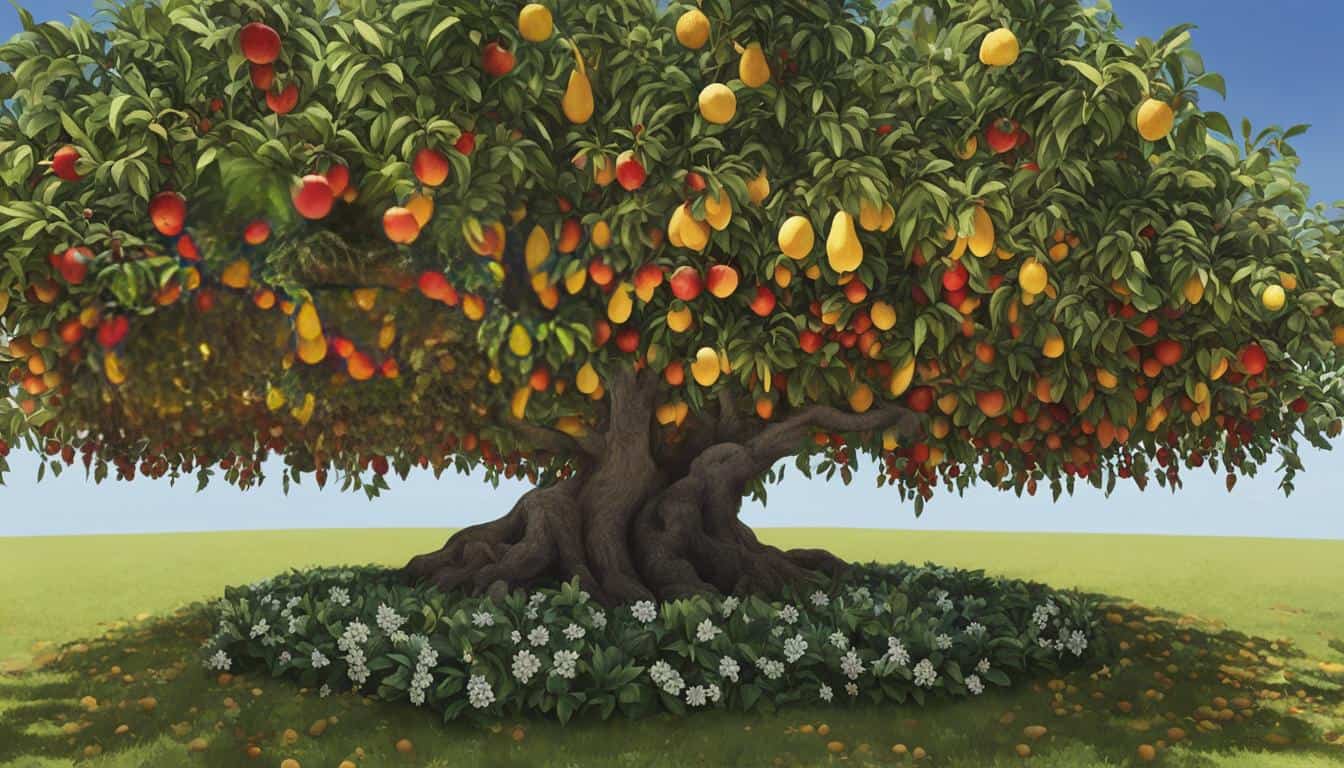
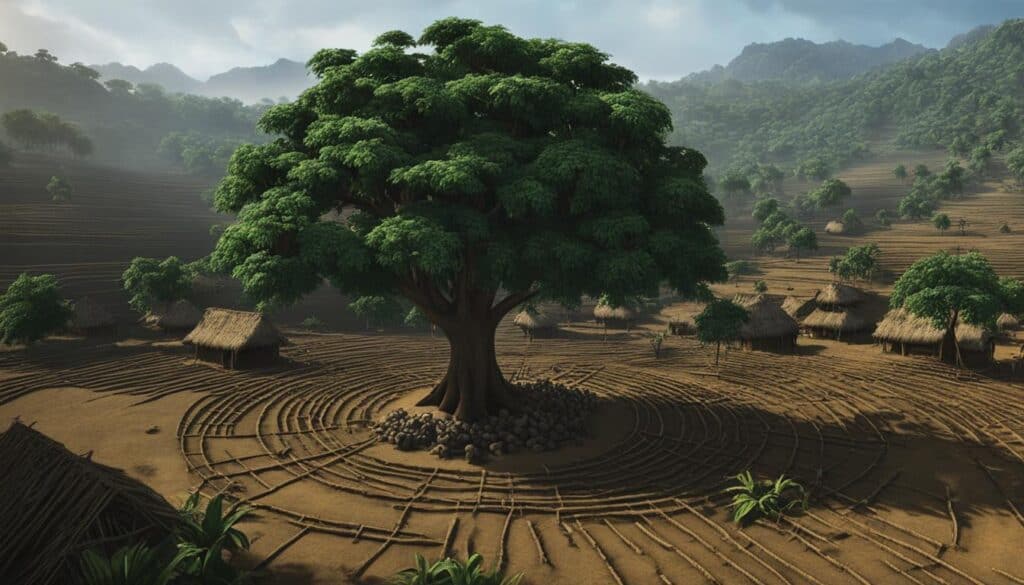
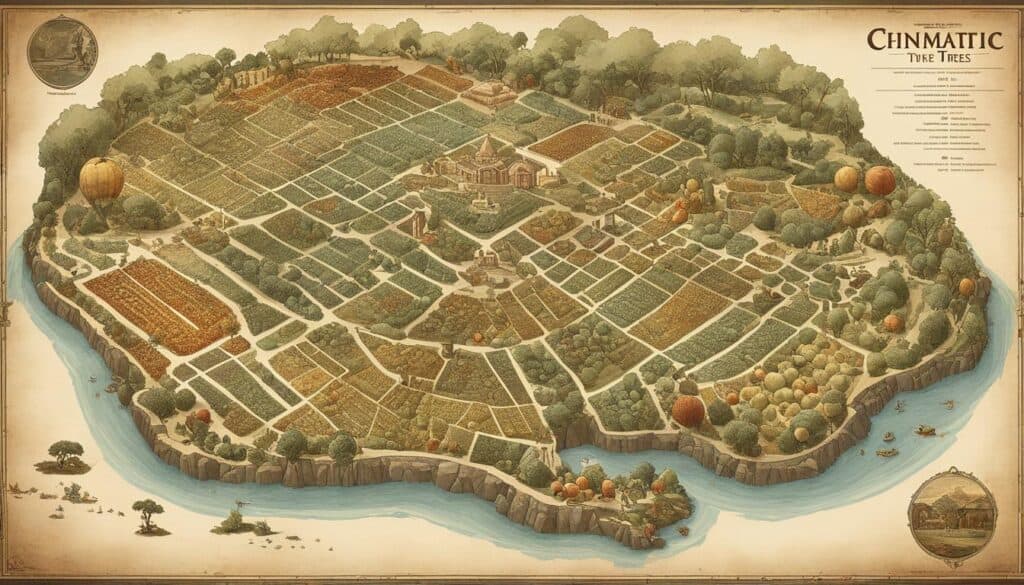
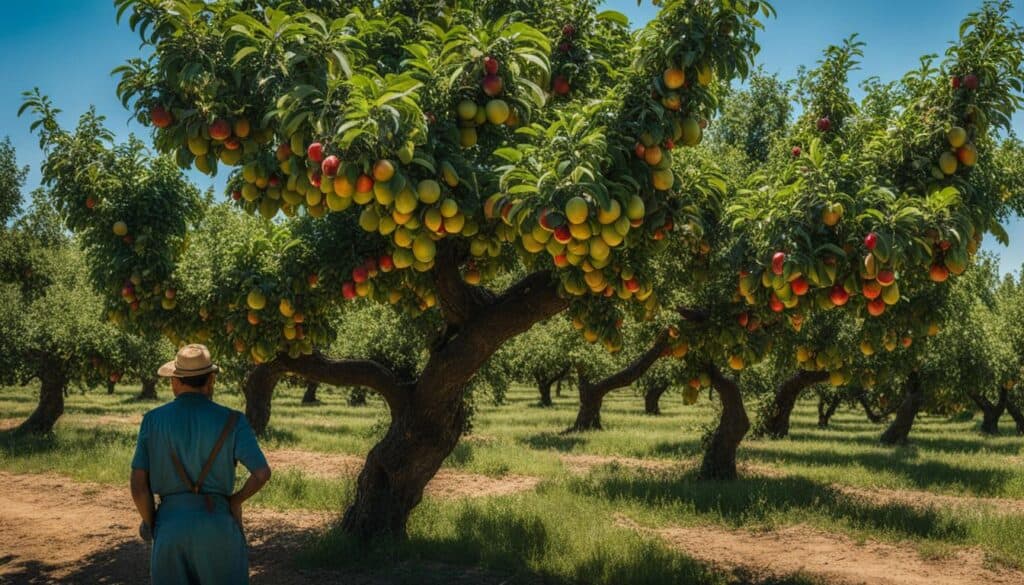

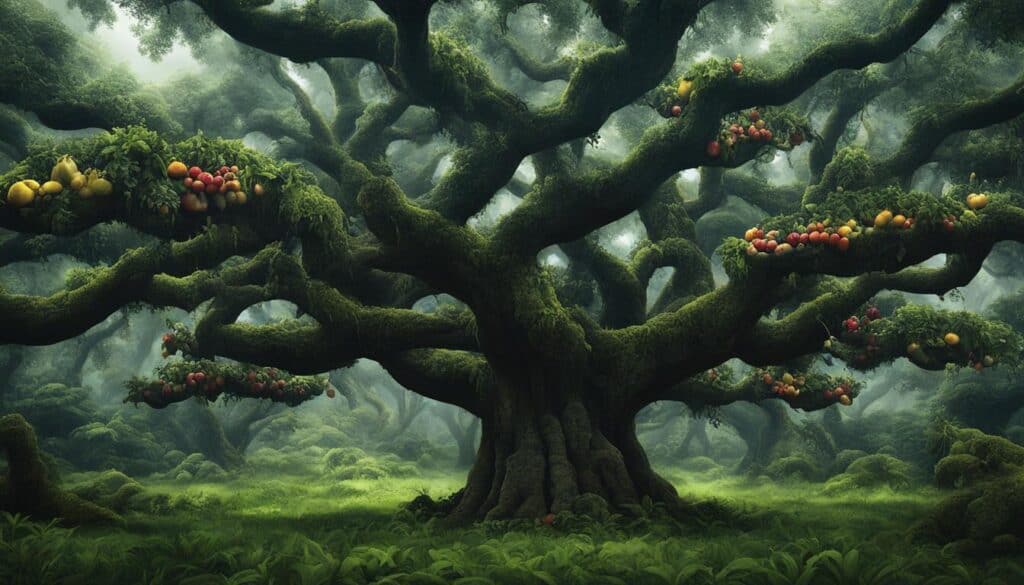



Leave a Reply